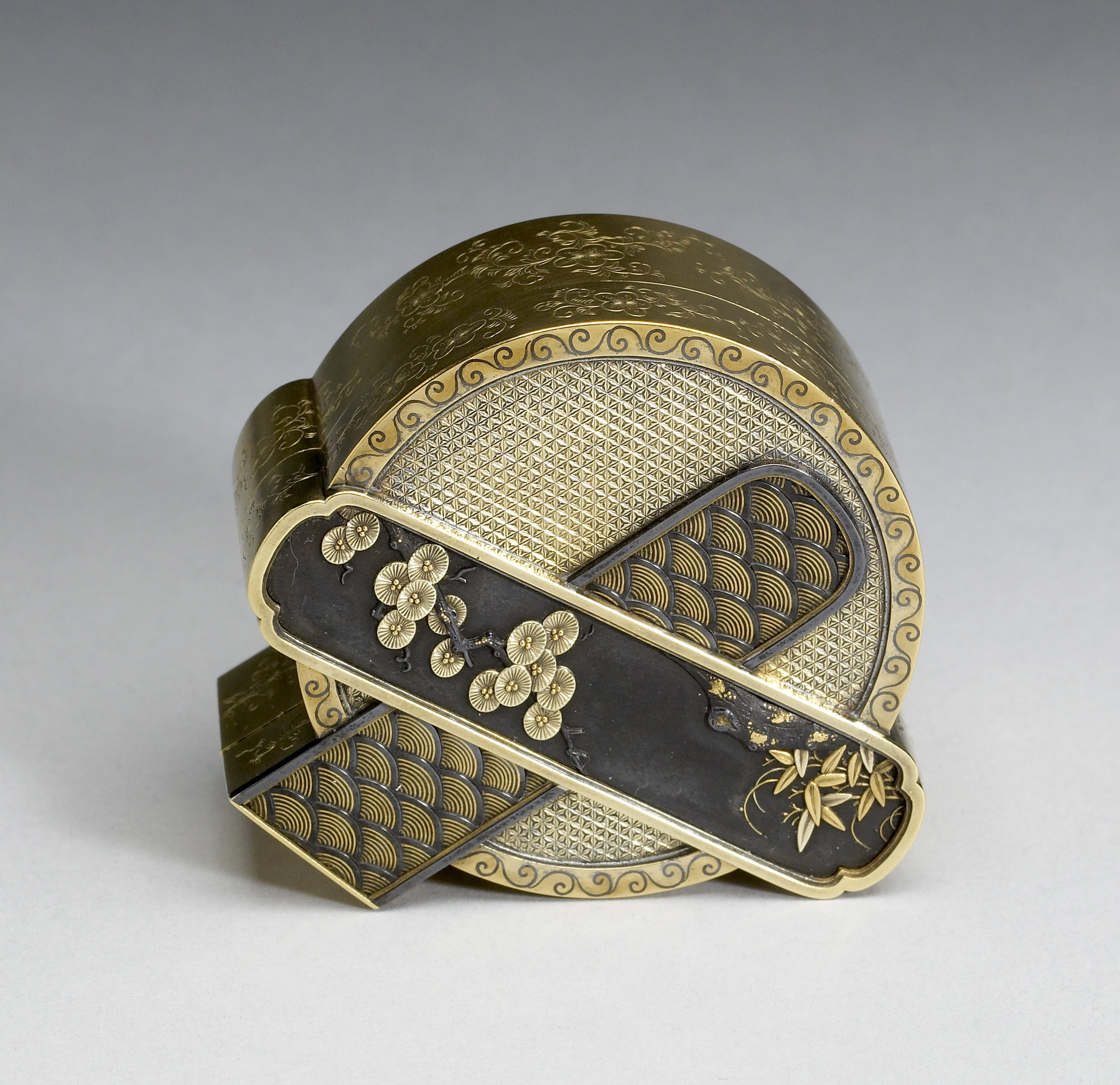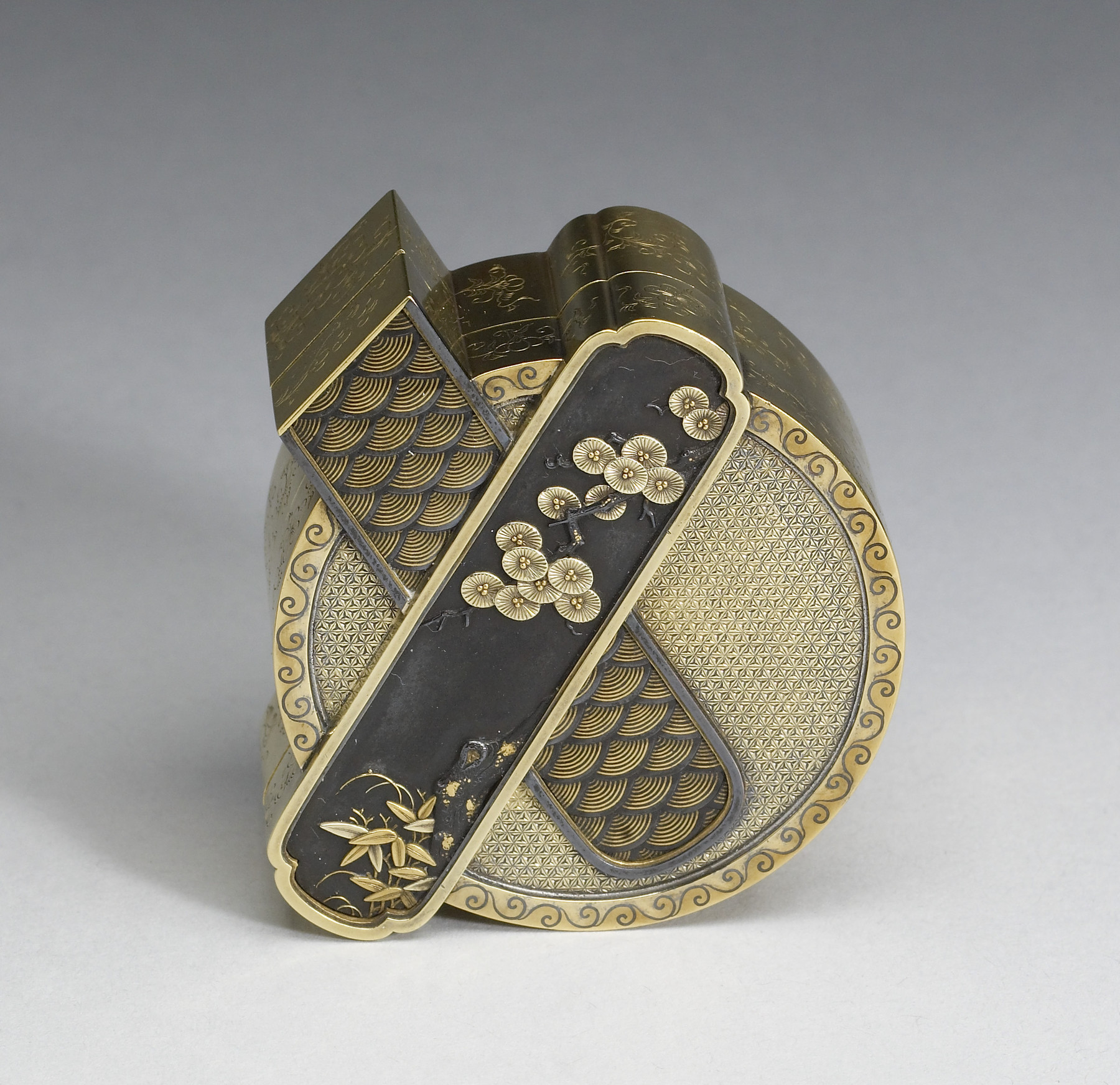Box in the Shape of Two Inksticks Crossed on an Inkstone
(Japan and Korea )
By the Meiji period (1868–1912), education in Japan was accessible to the nobility, Buddhist monks, samurai, merchants, and commoners. Among the upper classes, including the samurai, their education encompassed poetry, music, and calligraphy, with an emphasis on the study of Chinese texts.
Owning a quality writing set, including this box in the shape of two inksticks, with elegant decoration was a sign of status and refinement in Japan through the 19th century. All the writing utensils and equipment were stored neatly in their respective lacquer boxes.
Inscription
Provenance
Provenance (from the French provenir, 'to come from/forth') is the chronology of the ownership, custody, or location of a historical object. Learn more about provenance at the Walters.
Henry Walters, Baltimore [date and mode of acquisition unknown]; Walters Art Museum, 1931, by bequest.
Conservation
| Date | Description | Narrative |
|---|---|---|
| 2/5/2016 | Treatment | Cleaned |
| 2/5/2016 | Treatment | Cleaned to reduce silver tarnish in preparation for exhibition. |
Geographies
Japan (Place of Origin)
Measurements
H: 15/16 × W: 2 3/16 × D: 1 15/16 in. (2.4 × 5.6 × 5 cm)
Box H: 13/16 × W: 2 3/16 × D: 1 15/16 in. (2 × 5.6 × 5 cm)
Lid H: 3/8 × W: 2 3/16 × D: 1 15/16 in. (0.9 × 5.6 × 5 cm)
Credit Line
Acquired by Henry Walters, before 1931
Accession Number
In libraries, galleries, museums, and archives, an accession number is a unique identifier assigned to each object in the collection.
In libraries, galleries, museums, and archives, an accession number is a unique identifier assigned to each object in the collection.
57.1220




